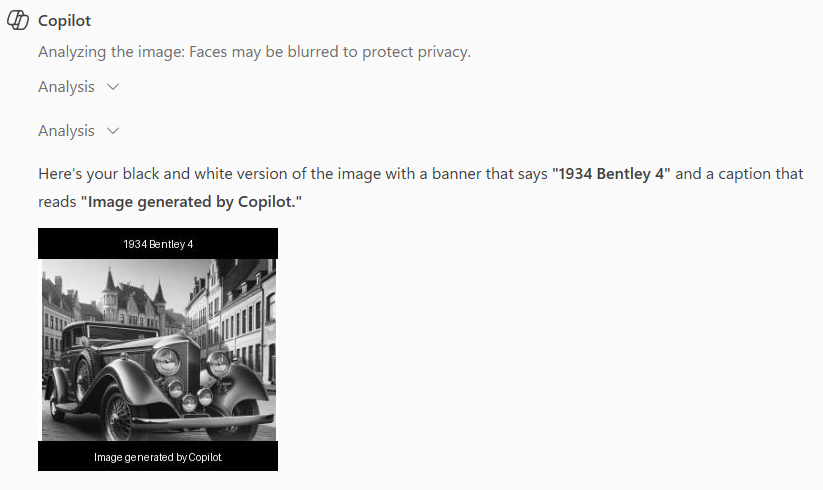Note
Access to this page requires authorization. You can try signing in or changing directories.
Access to this page requires authorization. You can try changing directories.
You can enhance the user experience of your declarative agents for Microsoft 365 Copilot by adding the code interpreter capability. The capabilities element in the manifest reference, and in the Capabilities section in Copilot Studio agent builder, provide several options for you to unlock features for your users.
Code interpreter is an advanced tool designed to solve complex tasks via Python code. It uses the reasoning model to write and run code, enabling users to solve complex math problems, analyze data, generate visualizations, and more. After the code runs, code interpreter outputs the results and the related code that it generates. It can also produce images or files based on the scenario, and accepts files as input for modification and analysis.
The code interpreter capability is available to users with a Microsoft 365 Copilot license and Copilot Chat users without metered usage enabled.
Note
Support for in-context agents that have code interpreter enabled varies by host.
Enable code interpreter in Microsoft 365 Agents Toolkit
If you're using Agents Toolkit and Visual Studio Code to create your agent and want to enable code interpreter, add the CodeInterpreter value to the capabilities property in your manifest file, as shown in the following example.
Note
You must be using version 1.2 or later of the declarative agent manifest schema to add the CodeInterpreter capability.
{
"capabilities": [
{
"name": "CodeInterpreter"
}
]
}
Enable code interpreter in Copilot Studio agent builder
If you're using Copilot Studio agent builder to create your agent and want to enable code interpreter, open the Configure tab and then, under Capabilities, choose the toggle next to Code interpreter.

Code interpreter capability examples
The code interpreter capability uses the reasoning model to allow declarative agents to write and run Python code in a sandboxed environment. This capability lets users solve complex math problems, analyze data, generate visualizations, and more. After the code runs, code interpreter outputs the results and the generated code. It can also produce images and other files based on the scenario and accepts files as input for modification and analysis.
Adding code interpreter to your agents offers your users a broad range of functionality, including:
- Data graphing
- Data QR codes and data visualizations
- Creating files containing synthetic data
- Solving complex math problems
- Modifying uploaded images
Copilot can also provide copyable and downloadable versions of the code it generates when running these tasks.
Create graphs and charts
Users can employ agents that have code interpreter enabled to create graphs and charts. For example, in response to the prompt Graph the first 20 numbers in a Fibonacci sequence, Copilot produces the following line graph.
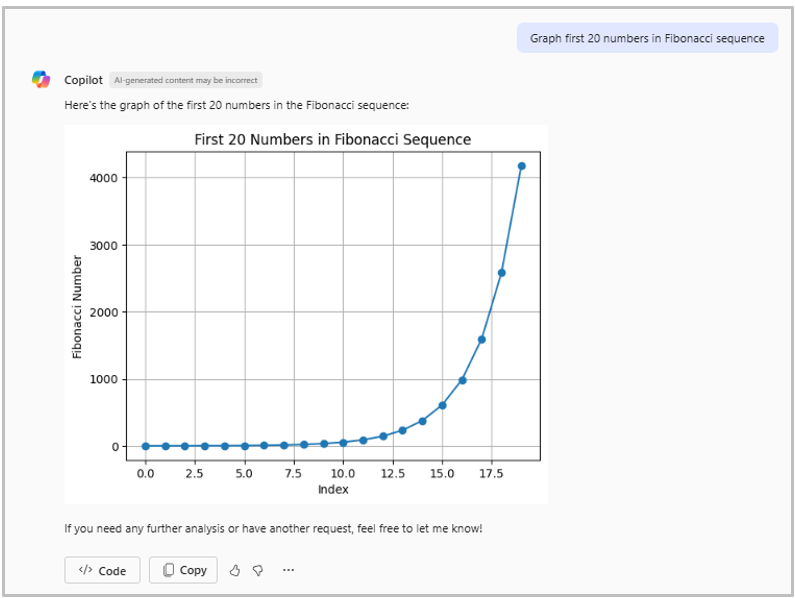
When the user selects the </> Code button, the agent provides the corresponding Python code.
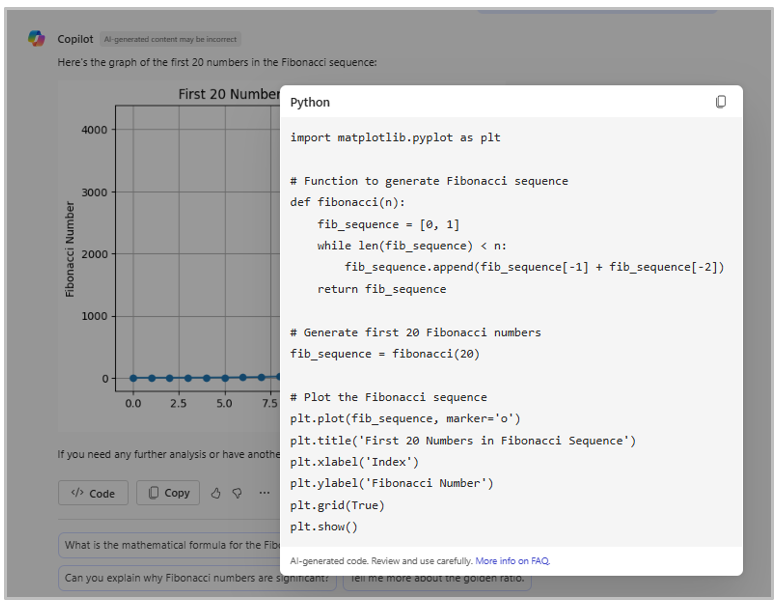
Users can also upload data files to generate graphs and charts so they can visualize their data. The supported file formats are Word, Excel, PowerPoint, PDF, CSV/TSV, and TXT/UTF8. For example, a user can upload an Excel file with sales data and enter the prompt: Create a bar chart and line graph of my uploaded sales data. The agent returns the following response.
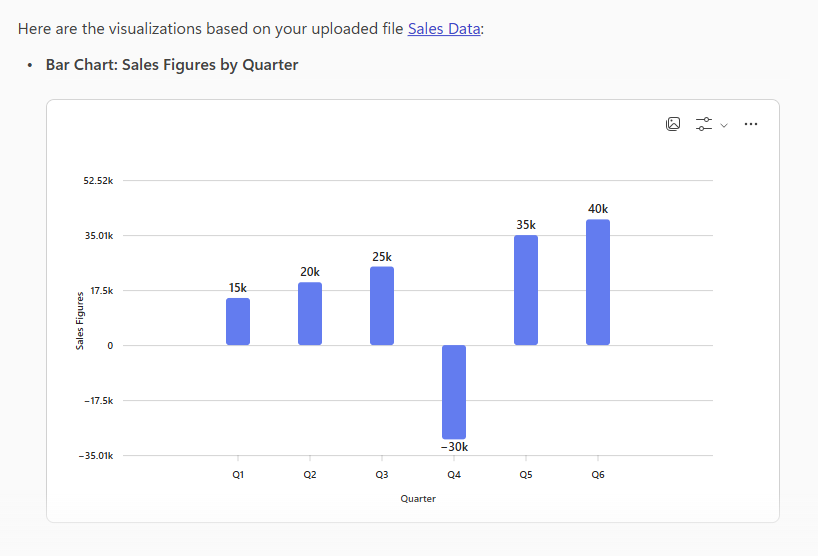

Create QR codes and data visualizations
With code interpreter enabled, users can create a variety of data visualizations such as QR codes and word clouds. For example, in response to the user prompt Create a QR code for Microsoft's corporate website, the agent presents both the corresponding URL and matching QR code.
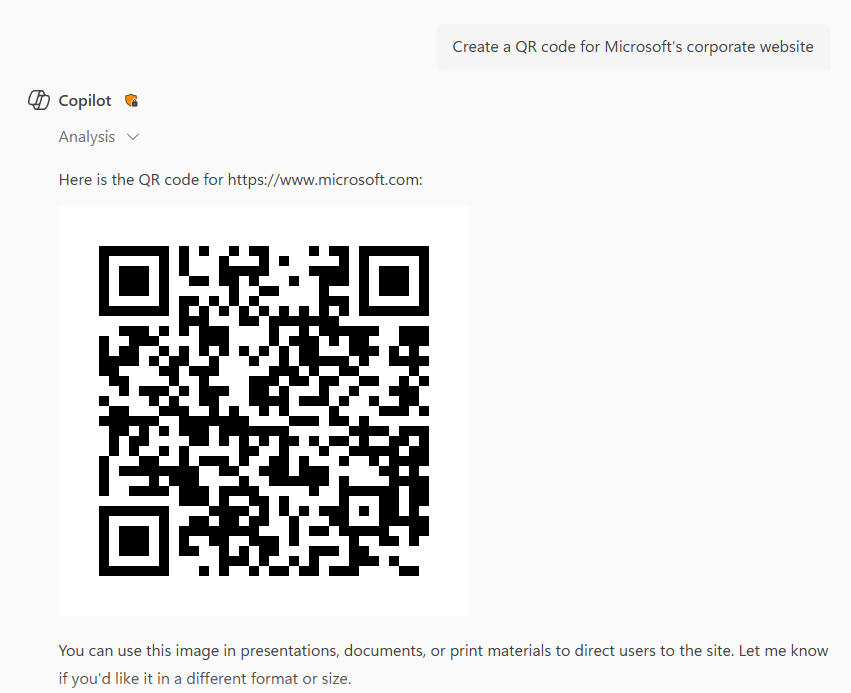
For a word cloud, the prompt Create a word cloud of top pet names generates an image that includes the most common names, as shown in the following example.
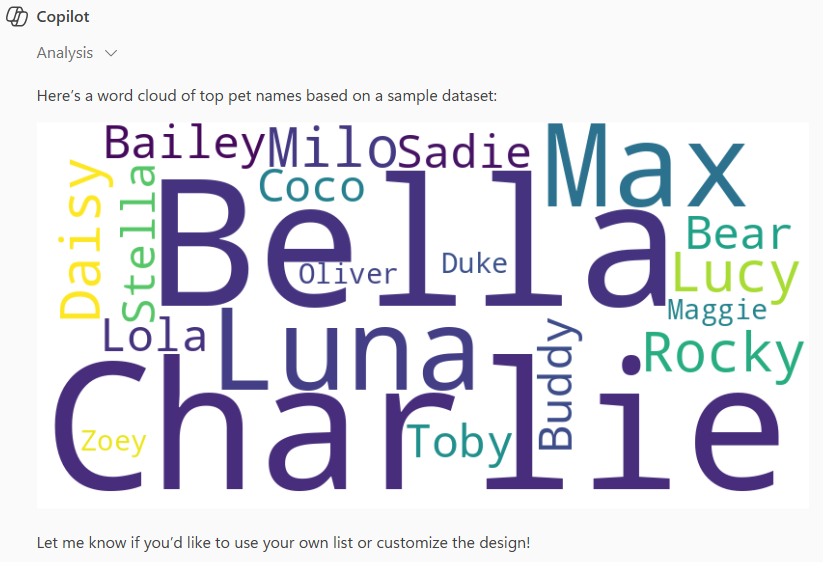
Create synthetic data
When a user needs sample data to work with, by integrating code interpreter you make it possible for them to create synthetic data for a variety of purposes. The agent can generate the requested sample data and then output it as Word, Excel, PowerPoint, or PDF files. Following are example prompts and responses.
Prompt: Create a table of 10 fake financial transactions including date, amount, merchant, and category.
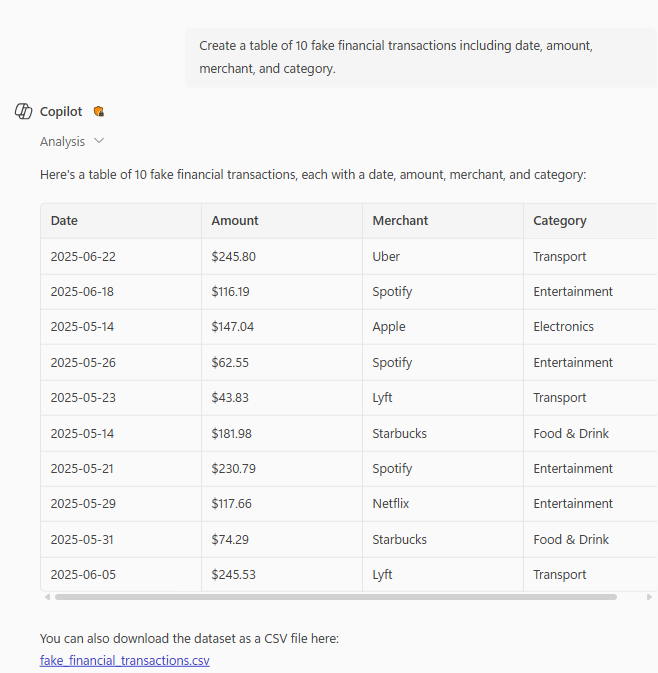
Prompt: Generate 20 synthetic customer support chat transcripts about billing issues.
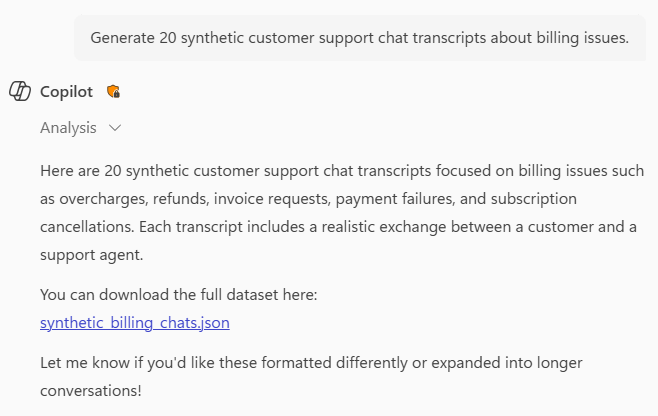
Solve complex math problems
When you add code interpreter to your agent, users can prompt your agent to solve complex math problems, as shown in the following example.
Prompt: Provide the integral of the area under the curve for the function ( f(x) = x^3 - 4x^2 + 6x - 2 ) from ( x = 0 ) to ( x = 3 ).
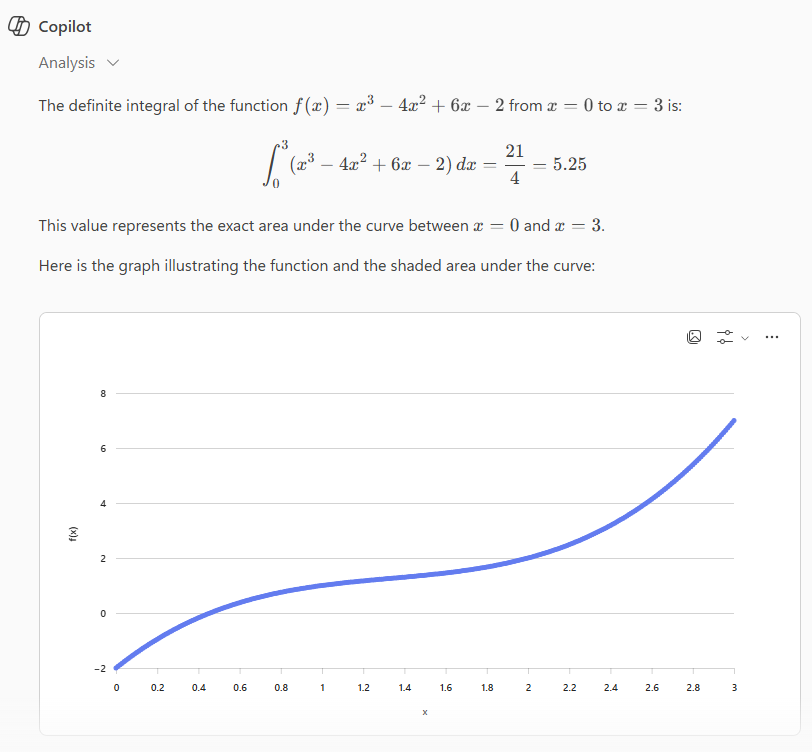
Modify uploaded images
Integrating code interpreter also allows users to modify uploaded images. Agents with this capability can add banners and captions to images and can generate black and white versions of color images. (The following image was generated by Copilot.)

To modify that image, the user can enter the prompt Give me a black and white version of the attached image. Add a banner that says "1934 Bentley 4" and a caption that says "Image generated by Copilot." The agent provides the following result.
